Knowing how to develop a strategy plan is essential for any business looking to scale and sustain long-term success. Without a well-thought-out strategy, companies risk stagnation, inefficiency, and missed opportunities. Whether you’re a startup or an established business, a clear and actionable strategy plan can help you align your vision, optimize operations, and drive measurable growth.
Drawing inspiration from Verne Harnish’s “Scaling Up™” methodology, this guide will break down how to develop a strategy plan into five simple steps. By the end, you’ll have a concrete roadmap to implement a strategy that fuels your company’s expansion and profitability.
Step 1: Define Your Core Purpose, Values, and BHAG
The foundation of how to develop a strategy plan that is strong lies in understanding why your business exists and where it is headed. This involves defining:
1. Core Purpose
Your core purpose is your company’s ultimate reason for existence beyond just making money. It answers the question, “Why do we do what we do?” Identifying your purpose aligns your team and ensures that every decision supports your long-term vision.
2. Core Values
Your core values dictate how your team operates. They guide decision-making and shape your company culture. Identify 3-5 non-negotiable values that define your brand.
3. Big Hairy Audacious Goal (BHAG)
Coined by Jim Collins, a BHAG is a long-term, ambitious goal that inspires and challenges your organization. Verne Harnish emphasizes the importance of setting a compelling, measurable BHAG that acts as a North Star for your strategy.
Action Steps:
- Conduct a brainstorming session with leadership to define your core purpose and values.
- Establish a BHAG that stretches your business over the next 10-25 years.
- Ensure alignment between leadership and employees on these foundational elements.
Step 2: Conduct a SWOT & Market Analysis
Once your core purpose is clear, assess your internal and external landscape using a SWOT analysis and market research.
1. SWOT Analysis
Evaluate your company’s Strengths, Weaknesses, Opportunities, and Threats:
- Strengths – What does your business do better than competitors?
- Weaknesses – What areas need improvement?
- Opportunities – What market trends or innovations can you leverage?
- Threats – What external risks could hinder your progress?
2. Market Analysis
Analyze your competitive landscape, industry trends, and customer needs. Consider:
- Who are your direct and indirect competitors?
- What are the current and emerging market trends?
- How are customer preferences shifting?
Action Steps:
- Gather internal data and conduct competitor research.
- Use tools like SWOT matrices and Porter’s Five Forces for deeper insights.
- Identify areas for differentiation and competitive advantage.
Step 3: Set Your 3-5 Year Strategic Priorities
With a clear vision and market insights, it’s time to set strategic priorities. Harnish’s “Scaling Up™” methodology suggests focusing on three to five major strategic initiatives that will drive business growth.
1. Identify Your Differentiators
Determine your unique value proposition (UVP)—what sets your business apart? This could be superior service, technology, pricing, or branding.
2. Set SMART Goals
Each strategic priority should have Specific, Measurable, Achievable, Relevant, and Time-bound (SMART) goals.
3. Allocate Resources
Ensure you have the right people, systems, and budget to execute these initiatives successfully.
Action Steps:
- Identify your top 3-5 strategic priorities for the next 3-5 years.
- Break them down into actionable, measurable goals.
- Assign ownership and allocate resources accordingly.
Step 4: Develop an Execution Plan with OKRs
A strategy is only effective if executed properly. Use Objectives and Key Results (OKRs) to ensure accountability and progress tracking.
1. Set Objectives
Your Objectives should be ambitious, qualitative, and inspire action. Example:
- Objective: Expand into three new markets within the next two years.
2. Define Key Results
Your Key Results are measurable indicators of progress. Example:
- Launch operations in Market A by Q2.
- Secure 100 new clients per market within the first year.
3. Assign Ownership & Accountability
Each OKR should have a responsible owner to drive execution and performance tracking.
Action Steps:
- Use the OKR framework to define strategic priorities.
- Assign responsible leaders to oversee execution.
- Implement regular check-ins to assess progress.
Step 5: Establish a Rhythm for Review & Adaptation
A strategy plan should be dynamic, not static. Regularly reviewing progress and adjusting as needed is critical to success.
1. Implement a Meeting Cadence
Verne Harnish’s “Scaling Up™” methodology emphasizes a rhythm of strategic meetings to maintain alignment:
- Daily huddles: Quick 15-minute check-ins to address immediate issues.
- Weekly meetings: Focused discussions on key metrics and progress.
- Quarterly strategy reviews: Adjust priorities and tactics as needed.
- Annual planning: Reevaluate the long-term vision and set new goals.
2. Track KPIs
Use Key Performance Indicators (KPIs) to measure success. Examples:
- Revenue growth
- Customer retention rate
- Employee engagement score
3. Stay Agile
Be prepared to pivot based on new market data, customer feedback, and internal performance.
Action Steps:
- Set up a meeting rhythm to track progress.
- Implement a KPI dashboard for real-time tracking.
- Foster a culture of adaptability and innovation.
How to Develop a Strategy Plan: Conclusion
Learning how to develop a strategy plan doesn’t have to be overwhelming. By following these five steps—defining your core purpose, conducting a SWOT analysis, setting strategic priorities, implementing OKRs, and establishing a review rhythm—you create a structured, scalable plan for business growth.
Inspired by Verne Harnish’s “Scaling Up™” methodology, this approach ensures that strategy isn’t just a document—it’s an actionable framework for sustained success. Now, it’s time to put these steps into action and develop a strategy plan that drives real business impact!
Not sure how to get started with developing a strategy plan? There’s no fast track to success, but we’ll help pave the path. Set up a free 30 min call with one of our Champion’s Coaches today!










